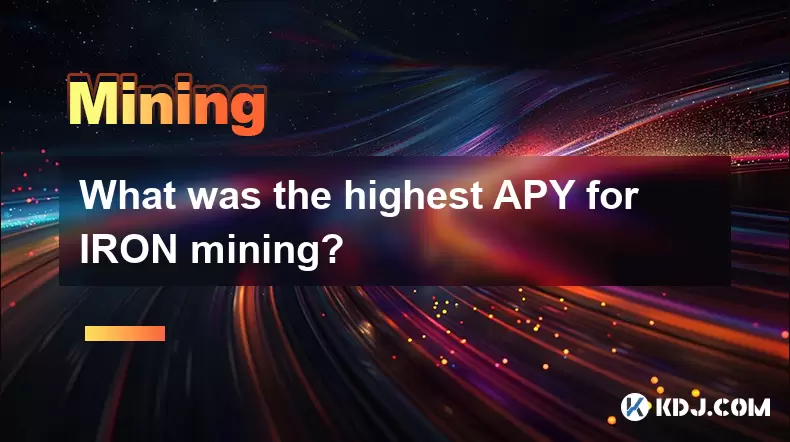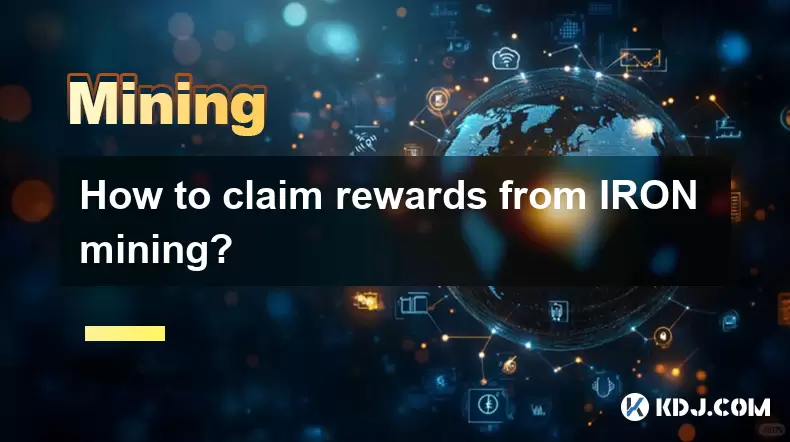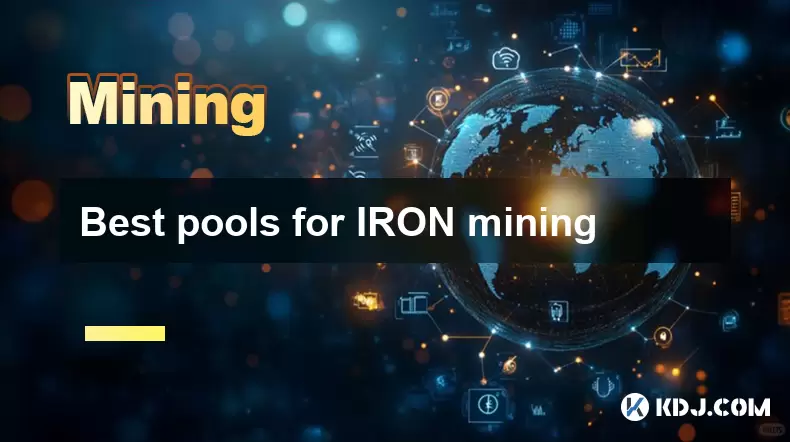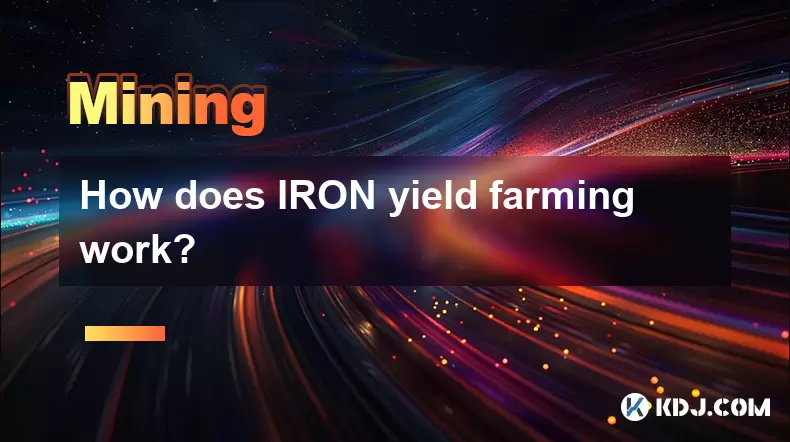-
 Bitcoin
Bitcoin $115100
-2.99% -
 Ethereum
Ethereum $3642
-1.38% -
 XRP
XRP $3.027
-5.51% -
 Tether USDt
Tether USDt $1.000
-0.05% -
 BNB
BNB $763.4
-1.32% -
 Solana
Solana $177.2
-5.42% -
 USDC
USDC $0.9999
-0.02% -
 Dogecoin
Dogecoin $0.2247
-6.47% -
 TRON
TRON $0.3135
0.23% -
 Cardano
Cardano $0.7824
-4.46% -
 Hyperliquid
Hyperliquid $42.53
-0.97% -
 Stellar
Stellar $0.4096
-6.09% -
 Sui
Sui $3.662
-2.61% -
 Chainlink
Chainlink $17.63
-3.57% -
 Bitcoin Cash
Bitcoin Cash $536.3
2.94% -
 Hedera
Hedera $0.2450
0.34% -
 Avalanche
Avalanche $23.23
-3.15% -
 Litecoin
Litecoin $112.2
-1.23% -
 UNUS SED LEO
UNUS SED LEO $8.976
-0.30% -
 Shiba Inu
Shiba Inu $0.00001341
-2.72% -
 Toncoin
Toncoin $3.101
-2.44% -
 Ethena USDe
Ethena USDe $1.001
-0.05% -
 Uniswap
Uniswap $10.08
-1.97% -
 Polkadot
Polkadot $3.938
-2.77% -
 Monero
Monero $323.9
0.87% -
 Dai
Dai $0.9999
-0.02% -
 Bitget Token
Bitget Token $4.481
-1.69% -
 Pepe
Pepe $0.00001199
-5.94% -
 Aave
Aave $288.2
-0.68% -
 Cronos
Cronos $0.1279
0.36%
How to sell mined Kaspa?
After mining Kaspa (KAS), transfer it securely to a supported exchange like Binance or KuCoin, then sell via market or limit orders and withdraw proceeds to your bank or wallet.
Jul 24, 2025 at 05:07 pm

Understanding Kaspa and Its Mining Ecosystem
Kaspa (KAS) is a decentralized proof-of-work cryptocurrency that leverages a unique blockDAG (Directed Acyclic Graph) structure to achieve high block generation rates—up to one block per second. This technological advancement allows for faster transaction finality and enhanced scalability compared to traditional blockchain architectures. Miners play a crucial role in maintaining the network's security by validating transactions and extending the blockDAG. Once Kaspa is mined, it resides in the miner’s wallet, typically a local or hardware wallet, and must be transferred to an exchange or peer-to-peer platform to be converted into fiat or other cryptocurrencies.
Mining Kaspa requires specialized software such as kaspaminer or compatible FPGA/ASIC setups, depending on the hardware used. After successful mining, rewards are credited to the designated wallet address. The next step—selling mined Kaspa—involves moving the coins from the mining wallet to a trading venue where liquidity exists. Understanding the technical and procedural steps involved in this transition is essential for a smooth and secure transaction.
Choosing the Right Exchange to Sell Kaspa
To sell Kaspa, you must first identify a cryptocurrency exchange that supports KAS trading pairs. Not all exchanges list Kaspa due to its relatively recent emergence and niche consensus mechanism. Major platforms like Binance, KuCoin, and Gate.io have integrated Kaspa, offering trading pairs such as KAS/USDT, KAS/BTC, and KAS/USD. Before selecting an exchange, verify the following:
- The exchange supports KAS deposits and withdrawals.
- Trading fees are transparent and competitive.
- The platform has strong security measures, including two-factor authentication (2FA).
- Withdrawal limits and processing times meet your requirements.
Once you’ve chosen a suitable exchange, create an account and complete the Know Your Customer (KYC) verification process if required. This step is mandatory on centralized exchanges and ensures compliance with regulatory standards. After verification, navigate to the deposit section, search for Kaspa (KAS), and copy the provided deposit address.
Transferring Mined Kaspa to an Exchange Wallet
After obtaining the deposit address from your chosen exchange, initiate the transfer from your mining wallet. This process varies depending on the wallet software used. Common wallets for Kaspa include KDX, Trezor Suite (with Kaspa support), and standalone CLI wallets. Follow these steps carefully:
- Open your Kaspa wallet application.
- Navigate to the Send or Transfer section.
- Paste the exchange’s KAS deposit address into the recipient field.
- Enter the amount of Kaspa you wish to sell.
- Set an appropriate transaction fee—Kaspa’s network typically requires minimal fees, but confirm the suggested rate in your wallet.
- Review all details, especially the address, as blockchain transactions are irreversible.
- Confirm and broadcast the transaction.
The transfer may take several minutes to confirm, depending on network congestion and the exchange’s confirmation requirements. Most exchanges require 6 network confirmations before crediting the deposit. Monitor the transaction using a Kaspa block explorer like explorer.kaspa.org by entering your transaction ID (TXID).
Executing the Sale on a Cryptocurrency Exchange
Once the Kaspa appears in your exchange wallet, you can proceed to sell it. Navigate to the KAS/USDT or KAS/USD trading pair, depending on your preferred fiat or stablecoin. Exchanges offer multiple order types:
- Market Order: Sells your KAS immediately at the best available price. This is the fastest method but may result in slippage during volatile markets.
- Limit Order: Allows you to set a specific price at which you want to sell. The trade executes only when the market reaches your price. This offers price control but may take longer to fill.
- Stop-Limit Order: Useful for protecting against sudden price drops. You set a stop price to trigger the order and a limit price for execution.
To place a market order:
- Select Market tab.
- Choose Sell.
- Enter the amount of KAS.
- Confirm the estimated USDT or USD amount you’ll receive.
- Click Sell KAS.
For a limit order:
- Switch to Limit mode.
- Input your desired sell price per KAS.
- Enter the quantity.
- Review the total estimated proceeds.
- Click Place Sell Order.
After the order is filled, the proceeds will appear in your exchange’s USDT or USD wallet.
Withdrawing Proceeds to a Bank or External Wallet
After successfully selling Kaspa, you may want to withdraw the funds. If you used USDT, you can either keep it as a stablecoin or convert it to fiat. To withdraw to a bank account:
- Go to the Withdrawal section.
- Select USD or your local currency if supported.
- Link your bank account if not already done.
- Enter the withdrawal amount.
- Confirm identity verification if prompted.
- Submit the request.
Some exchanges support direct SEPA, SWIFT, or domestic wire transfers. Alternatively, you can withdraw USDT to a personal wallet like Trust Wallet or MetaMask and use a peer-to-peer platform like Paxful or LocalBitcoins to sell for cash. Always check withdrawal fees and processing times—some banks may take 1–5 business days to credit the amount.
Security Best Practices During the Selling Process
Security is paramount when selling mined Kaspa. Never share your wallet seed phrase or private keys. Use two-factor authentication (2FA) on both your wallet and exchange accounts. Avoid public Wi-Fi when accessing sensitive accounts. Enable withdrawal address whitelisting on your exchange to prevent unauthorized transfers. Double-check all addresses before confirming transactions. Consider using a hardware wallet to store large amounts of KAS before selling, as they offer superior protection against online threats.
Additionally, keep records of all transactions for tax reporting. Most jurisdictions require reporting capital gains from cryptocurrency sales. Use transaction IDs and timestamps from the Kaspa block explorer to maintain accurate logs.
Frequently Asked Questions
Can I sell Kaspa directly from my mining rig without using an exchange?
Yes, through peer-to-peer (P2P) platforms like HodlHodl or Bisq, you can sell Kaspa directly to buyers. You provide your wallet address, agree on a price (often in fiat), and release the KAS after receiving payment. These platforms use escrow to secure transactions but require careful communication and trust verification.
What are the tax implications of selling mined Kaspa?
Mined Kaspa is typically considered income at the time of mining, valued at the market rate. When you sell it, the difference between the sale price and the mining valuation may be subject to capital gains tax. Consult a tax professional in your jurisdiction for precise reporting requirements.
Why hasn’t my Kaspa deposit appeared on the exchange?
Check the transaction status on a Kaspa block explorer using the TXID. Ensure the address was correct and that the exchange requires a specific number of confirmations. If the transaction is confirmed but not credited, contact the exchange’s support team with the TXID and timestamp.
Are there fees involved in selling Kaspa on an exchange?
Yes. Exchanges charge trading fees, typically ranging from 0.1% to 0.2% for takers. Withdrawal fees apply when moving funds out—these vary by currency and network. For example, withdrawing USDT via TRC-20 may cost $1, while ERC-20 could be higher. Always review fee schedules before executing transactions.
Disclaimer:info@kdj.com
The information provided is not trading advice. kdj.com does not assume any responsibility for any investments made based on the information provided in this article. Cryptocurrencies are highly volatile and it is highly recommended that you invest with caution after thorough research!
If you believe that the content used on this website infringes your copyright, please contact us immediately (info@kdj.com) and we will delete it promptly.
- BONK's Wild Ride: Selling Pressure and Market Dip - A New Yorker's Take
- 2025-07-26 03:30:12
- Pepeto Presale Heats Up: Demo Trading and Meme Coin Mania!
- 2025-07-26 02:50:11
- WeWake, Nexchain AI, and the Crypto Presale Frenzy: What You Need to Know
- 2025-07-26 02:50:11
- Scottie Pippen's XRP Moonshot: A Slam Dunk or an Air Ball?
- 2025-07-26 03:30:12
- BlockDAG: The Crypto Coin Revolutionizing Presale Mining
- 2025-07-26 03:35:12
- Nexchain: Your High-ROI Ticket to the Presale Crypto Revolution
- 2025-07-26 03:35:12
Related knowledge

What was the highest APY for IRON mining?
Jul 23,2025 at 05:14am
Understanding IRON Token and Its Mining MechanismThe IRON token is a stablecoin that operates within the Iron Finance ecosystem, primarily on blockcha...

What is impermanent loss in IRON pools?
Jul 23,2025 at 09:00am
Understanding Impermanent Loss in the Context of IRON PoolsImpermanent loss is a phenomenon that affects liquidity providers in decentralized finance ...

How to claim rewards from IRON mining?
Jul 23,2025 at 02:21pm
Understanding IRON Mining and Reward MechanismsIRON Finance operated as a decentralized finance (DeFi) protocol on the Polygon and Binance Smart Chain...

How to start mining IRON on Polygon?
Jul 23,2025 at 08:00pm
Understanding IRON and Its Role on PolygonIRON is a decentralized, algorithmic stablecoin designed to maintain a 1:1 peg with the US dollar. It operat...

Best pools for IRON mining
Jul 26,2025 at 03:56am
Understanding IRON Mining and Its Unique MechanismIRON (Iron Finance) was a decentralized finance (DeFi) project that aimed to create a multi-chain al...

How does IRON yield farming work?
Jul 23,2025 at 10:14pm
Understanding IRON Yield Farming and Its Core MechanismIRON yield farming is a decentralized finance (DeFi) strategy that allows users to earn rewards...

What was the highest APY for IRON mining?
Jul 23,2025 at 05:14am
Understanding IRON Token and Its Mining MechanismThe IRON token is a stablecoin that operates within the Iron Finance ecosystem, primarily on blockcha...

What is impermanent loss in IRON pools?
Jul 23,2025 at 09:00am
Understanding Impermanent Loss in the Context of IRON PoolsImpermanent loss is a phenomenon that affects liquidity providers in decentralized finance ...

How to claim rewards from IRON mining?
Jul 23,2025 at 02:21pm
Understanding IRON Mining and Reward MechanismsIRON Finance operated as a decentralized finance (DeFi) protocol on the Polygon and Binance Smart Chain...

How to start mining IRON on Polygon?
Jul 23,2025 at 08:00pm
Understanding IRON and Its Role on PolygonIRON is a decentralized, algorithmic stablecoin designed to maintain a 1:1 peg with the US dollar. It operat...

Best pools for IRON mining
Jul 26,2025 at 03:56am
Understanding IRON Mining and Its Unique MechanismIRON (Iron Finance) was a decentralized finance (DeFi) project that aimed to create a multi-chain al...

How does IRON yield farming work?
Jul 23,2025 at 10:14pm
Understanding IRON Yield Farming and Its Core MechanismIRON yield farming is a decentralized finance (DeFi) strategy that allows users to earn rewards...
See all articles

























































































